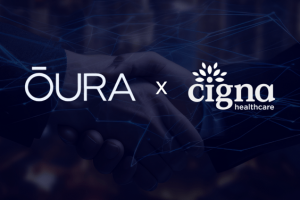Overcoming Barriers and Unlocking Pathways for Healthtech Adoption in Clinical Practice
Healthtech companies face a multifaceted journey when bringing innovation into clinical environments. From navigating strict regulations to securing support from a diverse group of stakeholders, success hinges not just on the product’s clinical value, but on how well companies manage structural and systemic challenges. Here’s a closer look at the key barriers and how healthtech firms can effectively overcome them.
1. Regulatory Hurdles and Market Entry Challenges
The healthcare industry is heavily regulated, especially regarding Electronic Health Record (EHR) systems. While these regulations aim to ensure patient safety, interoperability, and data security, they can unintentionally restrict innovation. Dominant players like Epic and Meditech benefit from this framework, creating closed ecosystems that limit access for new entrants and smaller startups.
Vendor lock-in is a common issue. Providers often find themselves tied to a single EHR system, making integration of new solutions difficult and costly. Even if innovators can offer better, more user-friendly technologies, they must adapt their products to fit existing vendor-specific requirements—delaying time to market and increasing development costs.
To create a more inclusive and innovative ecosystem, the sector must shift toward:
-
Open APIs
-
Vendor-neutral data standards
-
Interoperable-by-design platforms
These steps would allow greater flexibility and lower the barrier to entry for new players.
2. Navigating Multi-Stakeholder Decision-Making
Healthtech adoption isn’t driven by a single decision-maker. Instead, it requires alignment across multiple internal stakeholders:
-
Hospital administrators prioritize cost control and long-term savings.
-
Procurement teams assess vendor reliability and system compatibility.
-
Biomedical engineers ensure technical compliance and infrastructure fit.
-
Payers and regulatory bodies focus on the technology’s potential to lower costs, reduce readmissions, and improve outcomes.
To gain traction, healthtech companies must present a holistic value proposition tailored to each group. This includes:
-
Demonstrated compliance with regulations
-
Seamless system integration
-
Ease of use for clinical staff
-
Measurable improvements in workflow and patient outcomes
3. Financial Viability and Cost Justification
Cost is a critical component, and today’s value-based care environment has heightened the need for financial proof points. Stakeholders want more than assurances—they want numbers.
To meet these expectations, successful companies are equipping their teams with tools like:
-
ROI Calculators: Customizable to specific clinical settings, these tools use actual hospital data (e.g., patient volume, staffing) to project savings and estimate the payback period.
-
Evidence-Based White Papers: Case studies and third-party economic evaluations build trust and help de-risk investment decisions for procurement teams.
-
Cost-Benefit Dashboards: Real-time financial tracking post-implementation helps demonstrate ongoing value, including reductions in readmission rates and improvements in staff efficiency.
-
Reimbursement Guidance: Offering support around payer coverage, coding, and billing ensures the technology aligns with Medicare, Medicaid, and private insurance reimbursement models—critical for hospital buy-in.
4. Effective Demonstrations and Clinician Engagement
Clinicians are more likely to support new tools if they can see them in action. Successful demos focus on solving specific pain points, not overwhelming users with every feature.
Healthtech firms should tailor demonstrations to:
-
Highlight two or three core clinical benefits
-
Connect directly to improved outcomes or time savings
-
Fit seamlessly into daily workflows
This approach creates an “aha” moment where clinicians recognize real value, increasing the likelihood of adoption.
5. Sustained Support and Feedback Integration
Launching a product is only the beginning. Long-term success depends on robust post-implementation support:
-
Continuous training
-
Accessible customer service
-
Responsive troubleshooting
Equally important is establishing clinical feedback loops. This means not just gathering input but making meaningful updates based on that input. When clinicians see their feedback drive product improvements, they’re more likely to stay engaged—and even become advocates for the technology within their institutions.
Conclusion: Building the Future of Healthtech Adoption
Bringing a healthtech product to market requires more than innovation—it demands strategy. Companies must:
-
Navigate complex regulatory frameworks
-
Prove their financial value
-
Address the needs of diverse stakeholders
-
Demonstrate real-world clinical impact
-
Provide ongoing support and responsiveness
By balancing patient safety with adaptability, and combining strategic planning with deep clinician engagement, healthtech companies can forge stronger relationships, overcome systemic barriers, and deliver meaningful advancements in care.




































